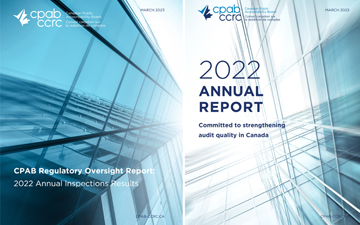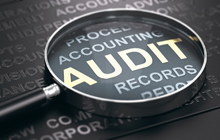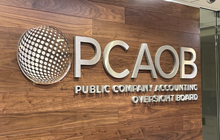Special Report: Overall audit quality drops at Canadian accounting firms as audit regulator pursues more transparency

Canadian Public Accountability Board annual inspection report reveals poor performance overall exaggerated by some audit firms
TORONTO, April 16, 2022 – Despite significant improvement by mid-tier accounting firms, overall audit quality dropped slightly in the past year, due largely to poor results at non-annually inspected auditors. According to the annual inspection report of the Canadian Public Accountability Board (CPAB), the audit regulator identified 33 per cent of files overall with “significant findings” in 2022, compared to 28 per cent in 2021.
By comparison, the International Forum of Independent Audit Regulators reported in their 2022 survey of inspection findings a rate of 30 per cent for the six largest global audit firm networks. CPAB, however, inspected more files than previously at non-annually inspected firms, which had significantly higher findings, thus inflating the overall numbers. Results for both the Big Four and mid-tier accounting firms in Canada have in fact significantly improved in the past five years.
The Canadian audit regulator is working with stakeholders to change the rules that govern its disclosure requirements. Enhanced transparency would have identified, for example, the Big Four accounting firm that fell far short of audit quality targets in 2022, which firms were involved in restatements — an issue flagged as a concern by CPAB — and which foreign firms are guilty of substandard audit engagements.
Of all the audit firms registered with CPAB, just 184 firms were responsible for auditing 8,800 companies (“reporting issuers”), but that number obscures the dominance of the Big Four. The four largest accounting firms (Deloitte, Ernst & Young, KPMG, and PwC) audit 90% of public companies by market capitalization. These are typically corporations listed on the Toronto Stock Exchange — names familiar to many Canadians.
Who audits the other 10 per cent? CPAB has disclosed a number that may surprise casual observers. Foreign firms audit about eight per cent of the remaining companies by market cap, while other Canadian accounting firms — including the seven largest national and regional firms — audit the remaining two per cent.
In other words, the Big Four audits most of the TSX and foreign firms audit most of the rest. Even a homegrown, national accounting firm such as MNP is only nibbling at the edges of large public companies. It is no coincidence that CPAB leveled a rare enforcement action this year at a foreign firm, Marcum LLP, for violating Canadian audit rules.
Mid-tier accounting firms beat the Big Four
CPAB sets a target for firms of no more than 10 per cent of files inspected with significant findings, “defined as a deficiency in the application of generally accepted auditing standards related to a material financial balance or transaction stream where the audit firm must perform additional audit work to support the audit opinion and/or is required to make significant changes to its audit approach.”
Significant findings at the Big Four increased slightly in 2021 but remain well below their five-year trend. One firm that, in 2021, met CPAB’s target of no more than 10 per cent of files with significant findings, missed the target in the current year, with 29 per cent of files with significant findings. This unidentified firm was directed to develop a “quality action plan,” which helped two firms that did not meet the CPAB target in 2021, to meet the target in 2022. If not for the poor performance of the one firm, however, the overall audit quality of the Big Four would be more noteworthy.
The picture is rosier at the seven annually inspected mid-tier firms, where significant findings dropped by 50 per cent. This group comprises Davidson & Company, DMCL, Manning Elliott, McGovern Hurley, Raymond Chabot Grant Thornton, and Smythe. This group has been of significant concern to CPAB in the past and it appears that enforcement actions have improved audit quality. CPAB inspected 34 files and identified significant findings in 11 of those files, compared to 22 findings in 41 files in 2021.
Significant findings at foreign firms
CPAB almost doubled its inspections of firms it does not inspect annually. The audit regulator found significant findings in about two-thirds of the group, compared to half in the previous year. Three of the firms in this group were foreign firms and all three had significant findings.
According to CPAB, the increase in the number of audit files inspected for non-annually inspected firms was due to a higher number of bi-annual firm inspections (firms that audit more than 50 reporting issuers), an increase in the number of crypto sector inspections due to growth in this sector, and return visits to some audit firms where concerns had been identified in previous inspections.
Disclosure delays seen as a risk by CPAB
The stark differences between the levels of transparency between audit regulators in Canada and the United States have been remarked upon in many forums including Canadian Accountant. The Public Company Accounting Oversight Board in the United States publishes individual inspection reports on accounting firms and has a robust online database that is easily accessible to stakeholders.
While CPAB states that it is working on changing the rules around disclosure, it sees the “risk of significant delays in making changes to our disclosures that meet the needs of our stakeholders” as one of its critical risks, as listed in its 2022 Annual Report.
Notably, the regulator states that implementation of changes to its rules its only risk mitigation strategy.
Colin Ellis is a contributing editor to Canadian Accountant. Top image: CPAB Annual Report 2022 and CPAB Annual Inspection Report 2022.









(0) Comments